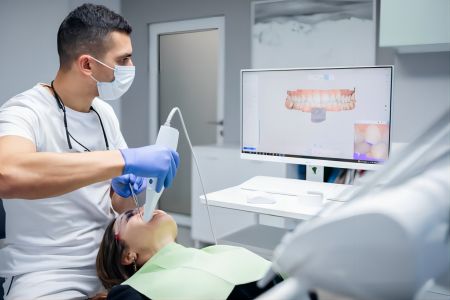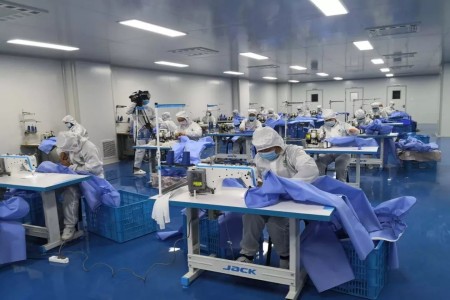2023/6/16

A Guide to Dental Disposables
When you step into a modern dental office, you're greeted by a clean, clinical, and welcoming environment. Behind the scenes, a critical component ensuring that safety and cleanliness is the extensive use of dental disposables. But what exactly are they, and why are they so indispensable to your dental care?
What Are Dental Disposables?
Dental disposables are single-use medical products designed for use in dental practices. As the name implies, they are used once on a single patient and then discarded. This practice is a cornerstone of modern infection control protocols, drastically reducing the risk of cross-contamination and the transmission of infectious diseases between patients and dental staff.
The primary purpose of disposables is to break the chain of infection. By eliminating the need to clean and sterilize certain items between patients, they ensure a consistently high level of hygiene, save valuable time, and enhance overall operational efficiency in the practice.
A Tour of Common Disposable Items in the Dental Office
The range of disposables used is vast, covering everything from patient comfort to critical surgical procedures. Here’s a categorized look at the most common items you’ll encounter:
1. Infection Control & Barrier Protection:
This category is all about creating a safe barrier between the clinical environment and potential pathogens.
Gloves: Nitrile, latex, or vinyl gloves are worn by every member of the clinical team for every procedure.
Masks: Surgical masks and respirators (like N95s) protect against airborne droplets and aerosols generated during procedures.
Protective Eyewear: Both patients and staff wear safety glasses or face shields to protect their eyes from debris and fluids.
Disposable gowns and jackets: Used during surgical procedures or whenever there's a high risk of splatter.
Surface Barriers: Clear plastic covers for dental light handles, chair switches, computer keyboards, and other difficult-to-clean surfaces. These are removed and replaced after each patient.
2. Patient Care & Comfort:
These items enhance the patient experience and maintain a sanitary field.
Bibs (Patient Napkins): The iconic cloth-like bib with a waterproof backing protects the patient's clothing.
Disposable Saliva Ejectors & High-Volume Evacuator (HVE) Tips: These are the small and large suction tips placed in the patient's mouth to remove saliva and water.
Surface Disinfectant Wipes: Used to thoroughly clean dental chairs, countertops, and equipment between patients.
3. Instrumentation & Procedure-Specific Items:
These are the tools that directly contact the patient's mouth during examination and treatment.
Mirrors and Probes: While many are metal and sterilizable, single-use plastic versions are common for specific procedures or in emergency kits.
Anesthetic Carpules: The small glass cartridges containing local anesthetic are single-use.
Needles: For administering local anesthetic.
Syringes: Both for anesthetic and for irrigating areas during procedures.
Burs and Diamonds: The tiny drill bits used to prepare teeth for restorations. While some are sterilized, many practices now prefer cost-effective disposable ones to guarantee sharpness and eliminate sterilization failure risk.
Prophy Angles and Cups: The rubber cups and brushes attached to the slow-speed handpiece for cleaning and polishing teeth.
Air/Water Syringe Tips: The tip that delivers a triple stream of air, water, or both into the mouth.
4. Surgical & Sterile Field Items:
For more invasive procedures like extractions, implants, or periodontal surgery, a higher level of asepsis is required.
Sterile Gauze and Cotton Rolls: Used for absorption, cleaning, and isolating teeth.
Surgical Drapes: To create a sterile field around the surgical site.
Suture Needles: For closing surgical sites.
Surgical Blades: Scalpel blades for making incisions.
Why Disposables Matter: Beyond Convenience
The shift toward disposables is driven by more than just convenience; it's a critical public health measure.
Enhanced Patient Safety: They are the most effective way to prevent the transmission of bloodborne pathogens like Hepatitis B, Hepatitis C, and HIV.
Clinical Efficiency: Disposables save dental assistants and hygienists countless hours that would otherwise be spent on cleaning, packaging, and sterilizing countless small items.
Consistency and Reliability: A new, sterile item performs predictably every time. There's no risk of corrosion, dulling, or damage from repeated sterilization cycles.
Regulatory Compliance: The use of single-use devices is a fundamental requirement for dental practices to comply with guidelines set by agencies like the CDC and OSHA.
The Environmental Consideration
The dental industry is acutely aware of the environmental impact of increased medical waste. Many manufacturers are now responding by creating products made from recycled materials, using biodegradable plastics where possible, and implementing more sustainable packaging. The trade-off between absolute patient safety and ecological responsibility remains an ongoing challenge that the field continues to address.
Conclusion
The next time you sit in the dental chair, take a moment to notice the small, single-use items around you. From the dental bib around your neck to the suction tip in your mouth, these dental disposables are the silent, vigilant guardians of your health. They are a non-negotiable element of modern dentistry, ensuring that your care is not only effective but, most importantly, safe.




 WhatsApp
WhatsApp
Send us your message
You can send an email asking for the price and detailed information of this product. We will reply you as soon as we receive your email